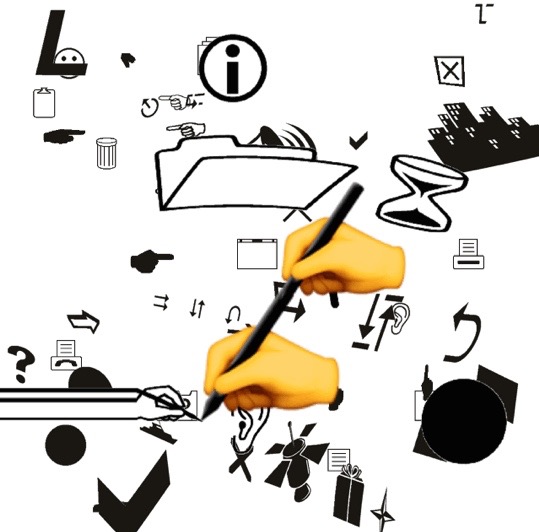You’ve seen it happen. A photo from years ago suddenly appears on social media with a new comment, and the original poster wonders why anyone would drag up such an old picture. To them, the photo is firmly rooted in the past as they are able to place the moment at a specific point in time. To observers who come across a picture online, there is rarely such context provided. Without that context, without any indicators explaining where in the progression of a life the photos and the objects we choose to depict online fall, they exist in a state of temporal grace outside the notion of any sort of linear continuity. The digital lives we create are increasingly divorced from our history.
Once upon a time, the recorded moments and material objects that made up the story of a human life read like a book. Akin to chapter titles and page numbers, discernible markers popped up along the way to guide an observer from the beginning to the end of the tale: the hues of a 1970s Polaroid, a tarnished swim trophy, dates neatly inscribed at the beginning of diary entries, scribbled notations on ubiquitous high school book covers professing the undying belief that Van Halen will rule forever. We order the artifacts of life to reflect how we want to be seen at the moment, who we are that that point in time, picking and choosing from the past to form our present. What came before was distinct from what came after. When not on display, when no longer instrumental to daily life, these artifacts and images are discarded or packed away like geological strata by the internal logic of time and place. College mementos don’t quite seem right going in the same bin as yellowed grade school drawings. Photos of friends have their own place, separate from the matching smiles and sweaters of family pictures. A photo of an ex, no matter how happy the relationship, probably won’t be found sitting on the mantle next to the kids at Disney.
As the details of life transfer to the digital world, the markers of space and time fall away in the transition. Consider the last time you saw a friend’s children or their new medal for participating in a marathon. Was it in person, or an Instagrammed image? Faced with displaying our lives online, unable to translate the material things that provide an anchor to our sense of self, we export an image of the object online as surely as we upload a digital image of ourselves. Our material objects become flattened into data, easily shareable, easily displayed—and just easily mis-categorized. Everything can be translated to the digital world, from lunch to a new car. Photography has assumed primacy in our online social worlds, and the ease of a photo eclipses the new novelty of text. Now armed with an excess of data about our lives, there is a paucity of information or context. 300 photos of a Paris trip emerge on social media with little detail or explanation as to their contents. As easy as it has become to upload an image, it is time consuming and tedious to caption these pictures, to track down the exact name of a hostel, or to remember to tag everyone from that weird night after the game. In its place is a void, empty of markers and expository text that is conspicuous by its absence. Objects and photos in the physical world retain a sense of time and space—and if necessary the reassurance of impermanence. We can eliminate physical pieces of our past if need be. Images of objects and photos in the digital world defy such constraints.
When information about a moment does appear, it scarcely lends itself to categorizing the moment in neat folders, or in the understandable context of now and then. Tags exacerbate the matter. #bestdayever, #friendsforlife, and #totallyworthit speak to an eternal instant that can be any moment in life. The digital world compounds our declining grasp on time and space by offering a self that exists in an eternal now. The result is that much of the personal information online sits divorced from time and place, standing side by side with all the other moments of life captured or translated to a digital medium. It’s a grand museum, a testament to the complexity of a human life and of every decision, every triumph, every quiet moment involved in the evolution of a person. Yet it is a permanent museum without a curator, an exhibition of jumbled, disconnected moments deposited next to each other without rhyme or reason that can never be fully erased. Your photo of college graduation exists in the same space and the same moment as your high school prom, your 37th Starbucks latte, or the regrettable night spent pining for an lost love through sad selfies. What does it say about who you are now, if the path of your life explodes in uncountable directions all around you rather than as a progression of who you were, to who you are, to who you will be?
What to take away from this disassociation is the idea that building a digital life needs to develop a better sense of time and place. The idea everything needs to stay online forever is as problematic as believing every photo belongs on display in a home. Archiving an online space is as essential as cleaning your room. Our digital spaces are not a giant closet—everything doesn’t just go into one place without consequences. If our digital selves are to reflect who we are, it means updating and developing the spaces we inhabit online as we move along in life. Oh, and tagging photos with the date. Your future biographer will thank you.




